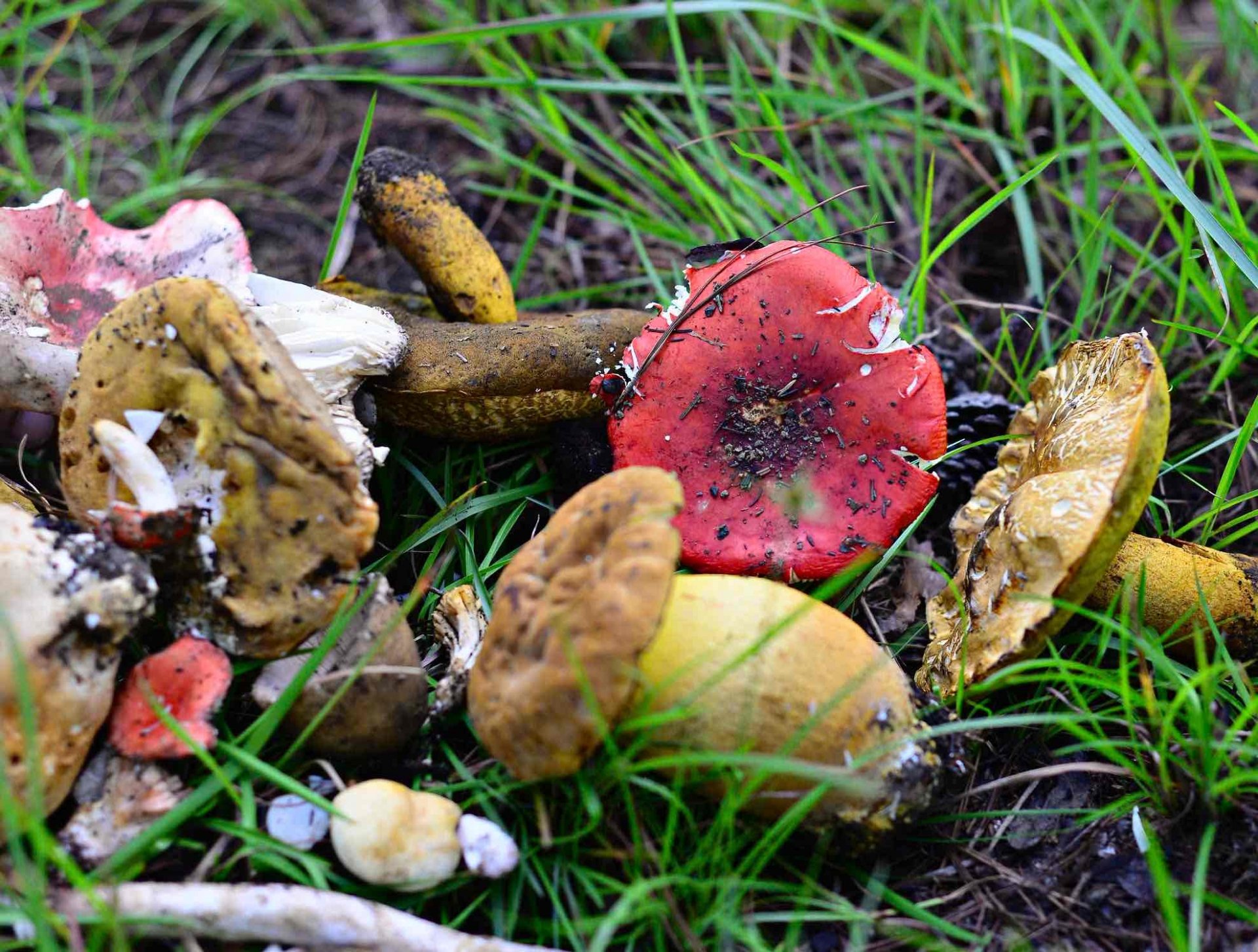 |
| Many types of mushrooms in the forest have beautiful colors that people pick to prepare dishes, but they have a high risk of causing food poisoning if they do not have enough knowledge and experience to distinguish between poisonous and harmless mushrooms. |
• DO NOT USE IT AS FOOD
In early June 2025, the first rains of the season made many types of mushrooms with many eye-catching colors and different shapes grow under the pine canopy of Da Lat forest and neighboring districts. Among them, some types of wild mushrooms with delicious flavors can be used to prepare dishes that have long been on the menu of natural mushroom connoisseurs.
Some people in Da Lat who often go mushroom picking said that in the rainy season, mushrooms grow and develop into populations under the pine forest canopy in Da Lat and the pine hill area in Lac Duong district, so they attract many people to pick mushrooms. The common feature is that mushrooms easily grow strongly after only 2-3 consecutive rainy days and each type of mushroom is distributed in different terrains, which is quite interesting.
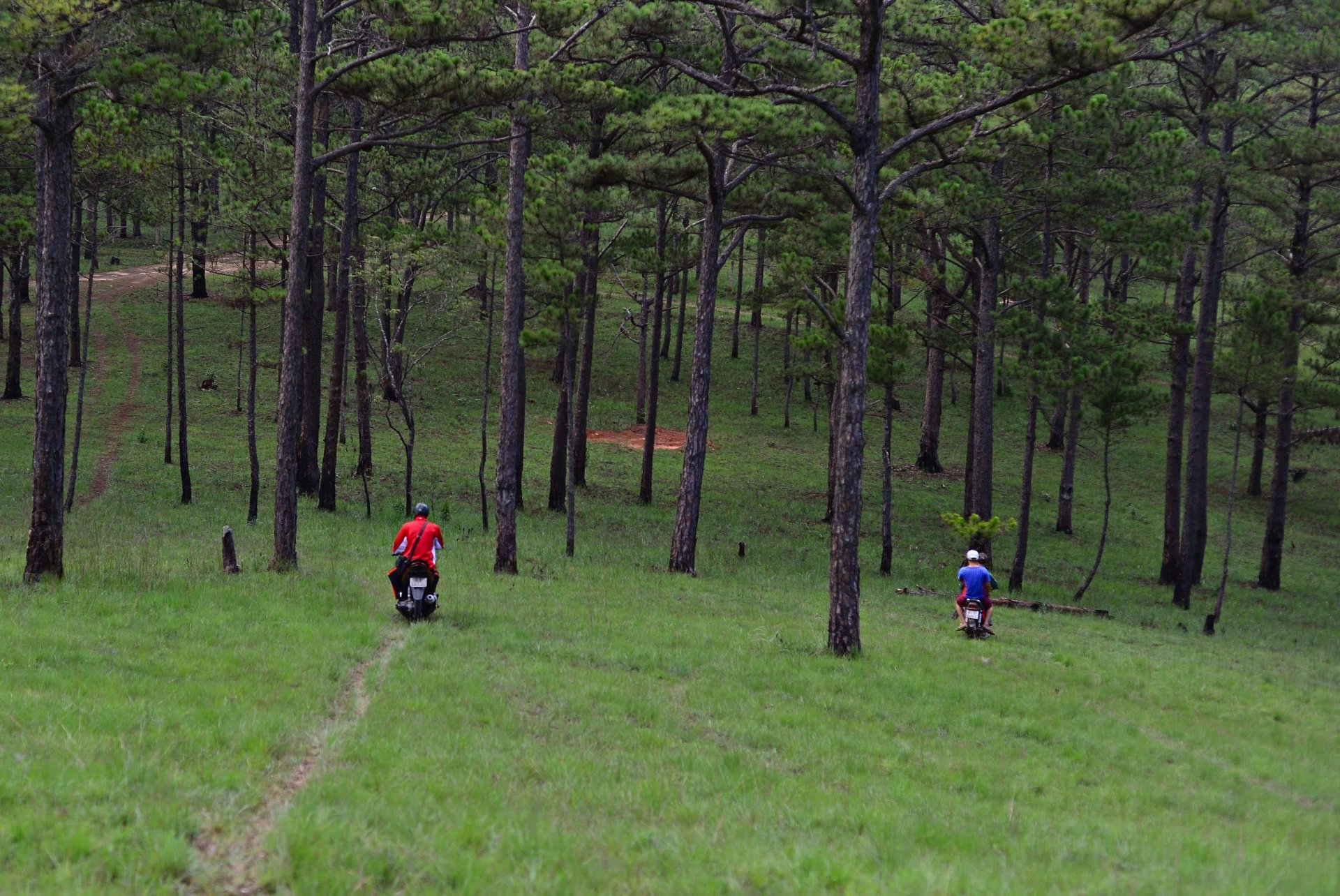 |
| People go into Da Lat pine forests to find mushrooms in the first days of the rainy season 2025 |
Mr. Nguyen Van Huy, a tourist from Dong Nai province, said that because of his love for nature and cuisine from wild mushrooms, he and his friends are very interested in picnicking in the forest and learning about mushrooms whenever they have the opportunity to go to Da Lat. “Through social networking sites, I learned that there are people who accept to take guests to experience mushroom picking under the pine forest canopy, so I contacted them because I trust the “skills” of the local people. Indeed, this is a quite interesting experience that few people know about.”
According to Mr. Huy, during his recent experience trip in May 2025, he was also guided by an experienced guide who picked some mushrooms to prepare dishes for the whole group to try right in the forest and he found it very delicious .
However, the instructor also advised Mr. Huy not to use mushrooms with strange shapes and colors compared to the types commonly sold on the market as food without experience because they are quite similar to mushrooms grown and sold on the market, so it is easy to confuse them .
“Although experiencing and enjoying wild mushrooms is very interesting, my friends and I are a bit worried and nervous,” Huy confided.
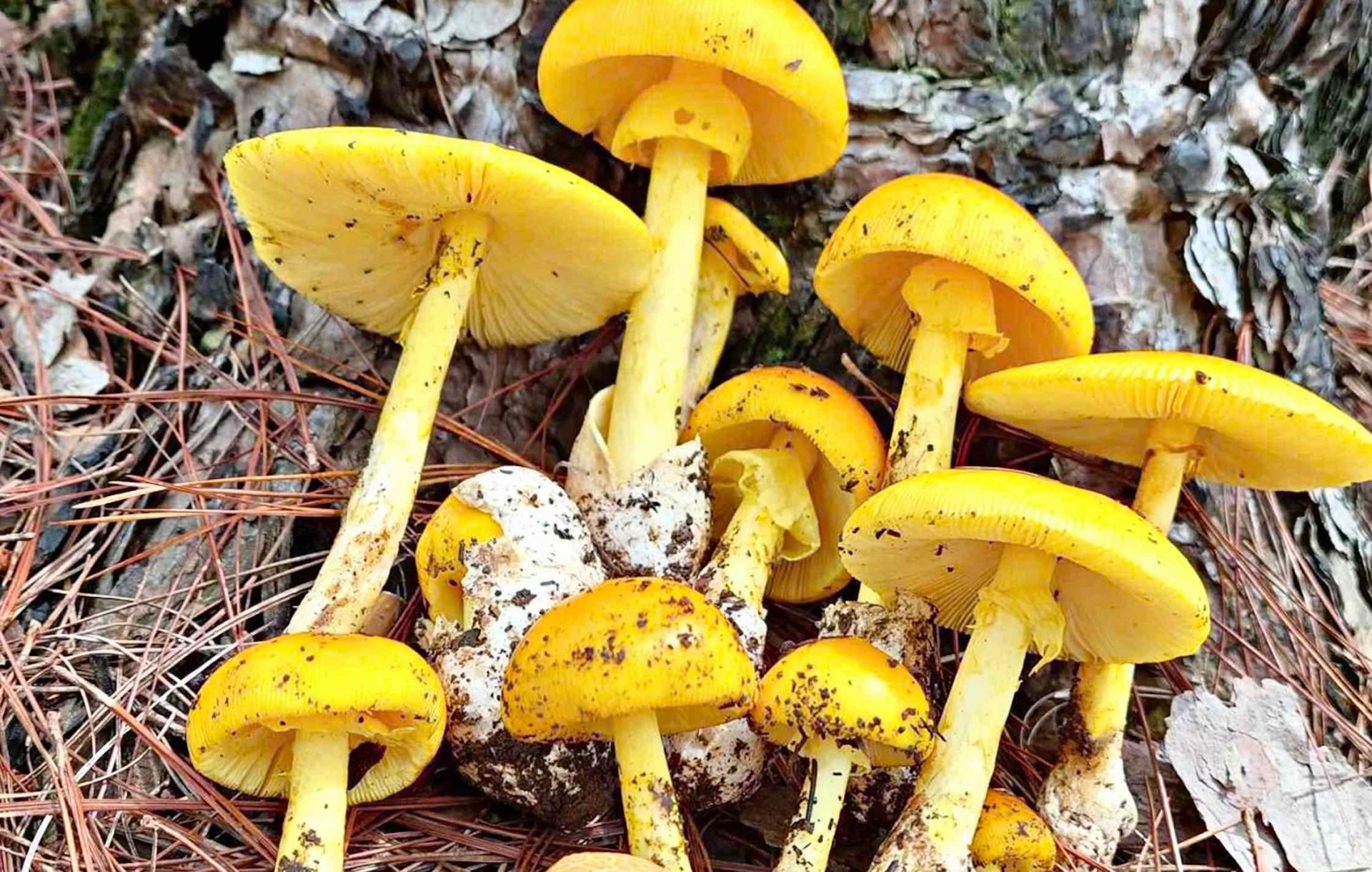 |
| Chicken egg mushrooms are harvested by people in Da Lat pine forests. |
• KNOWLEDGE AND EXPERIENCE REQUIRED TO DISTINGUISH DIFFERENT TYPES OF MUSHROOMS
Ms. Kieu Nha Phuong (living in Ward 11, Da Lat City) said that every rainy season, her family and friends go into the forest to pick many types of mushrooms with different colors and shapes. Mushrooms in the forest have a delicious flavor that can be used to prepare dishes. Among them, termite mushrooms are the most recognizable type, often growing on agricultural land and in pine forests. They have a very distinctive aroma and shape.
The egg mushroom is often distributed under the forest canopy with many rotten, damp pine needles. The mortar mushroom (shaped like a mortar shell) often appears in the forest canopy with barren land, few pine needles and the beef liver mushroom (mushroom cap has the shape and color of a beef liver) often grows next to water ditches, hillsides; the coral mushroom has the shape of a cluster of coral...
However, according to Ms. Phuong, to know which mushrooms are edible, good for health, and which are not, mushroom pickers often have many years of experience, and have shared knowledge of identifying mushrooms growing in the natural environment from relatives and acquaintances who have used them. Absolutely do not use wild mushrooms without knowledge and experience because they can easily lead to poisoning, endangering your life.
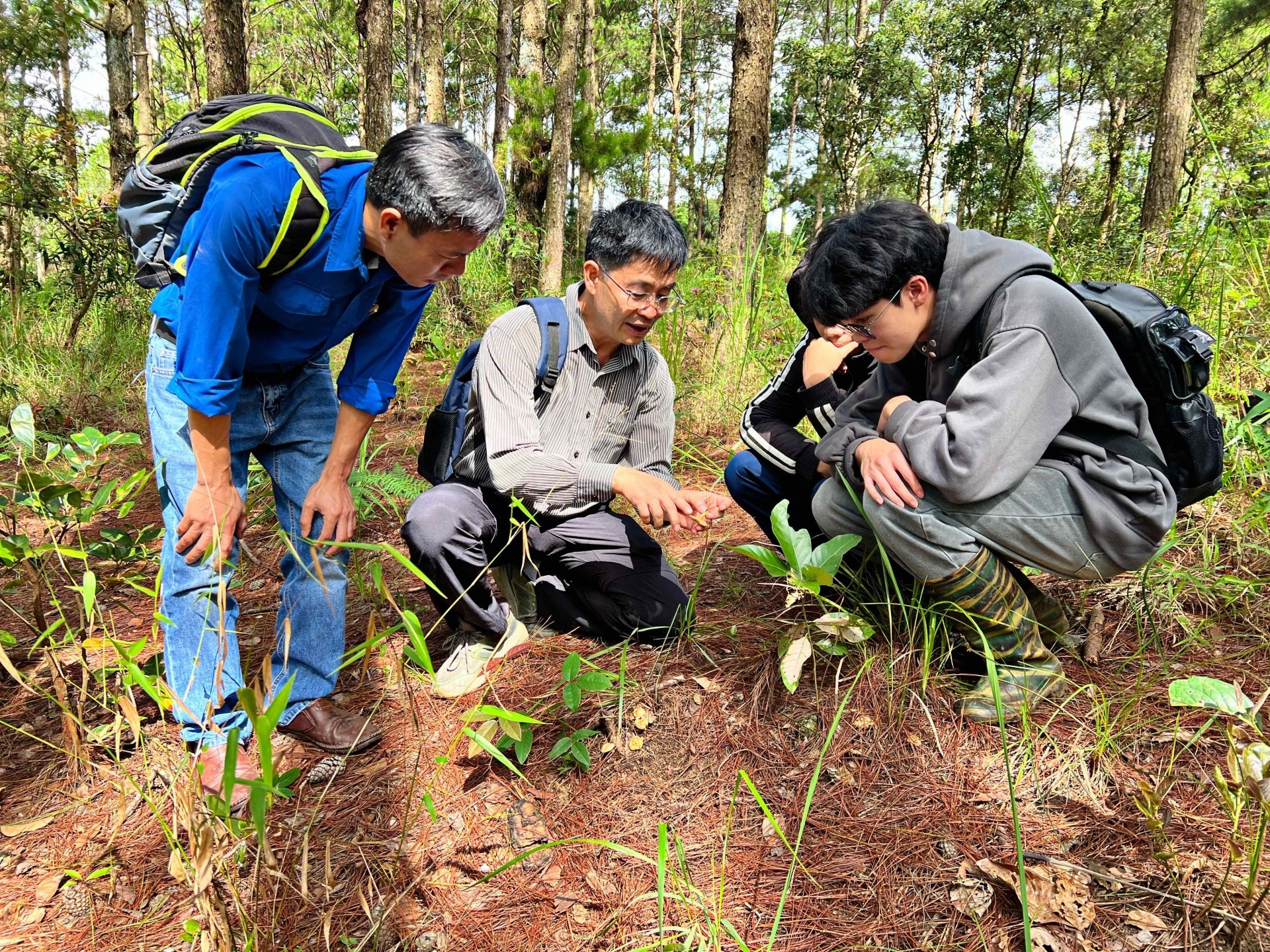 |
| Mycologist Dr. Binh Nguyen guides students of the Biology Faculty of Dalat University to distinguish the characteristics of poisonous and non-poisonous pine forest mushrooms in Dalat. |
• MANY TYPES OF TOXIC MUSHROOMS LOOK SIMILAR TO MUSHROOMS THAT PEOPLE COMMONLY PICK UP TO EAT
Mycologist Dr. Truong Binh Nguyen - Faculty of Biology, Dalat University shared that some research documents show that there are about 300 species of symbiotic mushrooms in the pine forests of Dalat and neighboring districts . Notably, there are many species of mushrooms that contain toxins that are dangerous if consumed.
Dr. Truong Binh Nguyen said that last May, on social networks, there was a case of posting information about taking tourists into the forest to experience picking mushrooms and processing mushrooms to eat. What is special is that this person claimed to have found Tung Nhung mushrooms worth 18 million VND per kilogram and picked them to prepare dishes for tourists. However, this could be a mushroom species in the Amanita genus, a genus of mushrooms that contains many species containing dangerous toxins.
“The appearance of the mushroom that you shared on social networks is Tung Nhung with the body, cap, and stem similar to the famous Tung Nhung mushroom (Tricholoma matsutake) on the market. If you do not observe carefully, dissect, or research, it will be difficult to identify” - Dr. Truong Binh Nguyen warned.
Not only are poisonous and non-poisonous mushrooms similar in appearance, many species of mushrooms belonging to the genus Amanita are identified to contain toxins that are life-threatening if consumed by humans. According to Dr. Truong Binh Nguyen, in the pine forests of Da Lat, there are currently more than 50 species of the genus Amanita; among them, many species have shapes similar to chicken egg mushrooms and peacock egg mushrooms, which are the types that people pick for use.
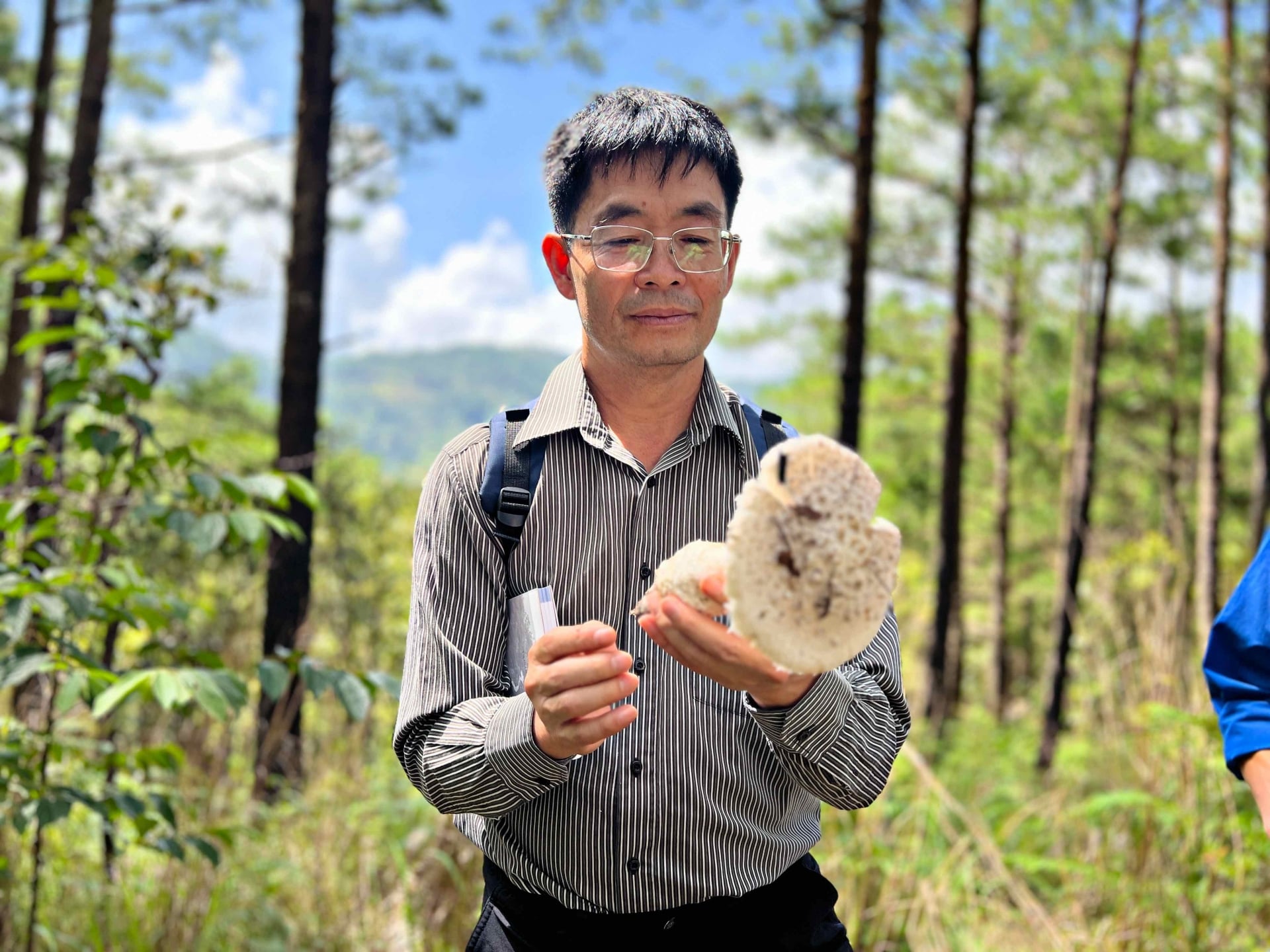 |
| Mycologist Dr. Truong Binh Nguyen - Faculty of Biology, Dalat University, pointed out a mushroom with dangerous toxins, common in Dalat pine forests, but at first glance, it looks quite similar to some types of mushrooms grown and sold on the market. |
Similarly, the pine forest in Da Lat has a type of mushroom that looks quite similar to termite mushrooms, which can easily be confused. "In terms of stem, color, and cap, the poisonous mushroom is similar to the termite mushroom that people often look for to make food. To distinguish dangerous mushrooms from termite mushrooms, it is necessary to dig down to the base. While termite mushrooms have long bases, poisonous mushrooms do not," said Dr. Truong Binh Nguyen.
Therefore, to distinguish between non-toxic mushrooms that can be used to prepare dishes and mushrooms that contain dangerous toxins, Dr. Truong Binh Nguyen recommends absolutely not using picked mushrooms to make dishes when you do not have the knowledge or experience. Mistaking the shape of some mushrooms is entirely possible, posing a risk of food poisoning when used.
 |
| A giant orphan mushroom was found in a pine forest. |
• DO NOT BUY MEDICINE TO TREAT AT HOME ON YOUR OWN IF YOU SHOW SIGNS OF MUSHROOM POISONING
Lam Dong Provincial Department of Health has recently increased information and knowledge dissemination on prevention and control of mushroom poisoning to households so that all people in the province absolutely do not collect, process, or eat wild mushrooms or strange mushrooms in nature because there are many similarities between poisonous mushrooms and edible mushrooms, so it is not easy to distinguish and there may be poisonous mushrooms among edible mushrooms.
Specialist Doctor Cao Thi Hong Mai - Department of Infectious Diseases, Lam Dong General Hospital said that in cases where there are signs of suspected poisoning after eating mushrooms, it is best for the family to take the patient to a medical facility or the nearest medical facility for timely emergency treatment, and not to buy medicine at home to take. Because the risk of worsening and progression to multiple organ failure is often very rapid.
According to Lam Dong General Hospital, from the beginning of 2025 until now, the hospital has received a total of 14 people showing signs of poisoning due to eating wild mushrooms. Among them, there is one tourist and 13 locals. Notably, of these 14 patients, 8 are from 2 families.
THERE HAVE BEEN MANY CASES OF POISONING DUE TO EATING THE WRONG KIND OF MUSHROOMS In Lam Dong province in recent years, there have been dozens of cases of people being poisoned by eating wild mushrooms containing toxins. A typical mushroom poisoning incident occurred on May 29, 2023, when local authorities recorded that 15 people from 8 families in Son Dien commune, Di Linh district were poisoned and had to be hospitalized due to eating a type of poisonous mushroom picked in the forest. This type of mushroom looks very similar in shape and size to the type of termite mushroom that a family went to the forest to pick and distribute to 7 other families in the village. After eating for 30 minutes, all patients had symptoms of chest tightness, vomiting, diarrhea, nausea, vomiting, and convulsions. The patients were diagnosed with digestive disorders suspected of poisoning due to the toxin of wild mushrooms (a type of brown-gray-ribbed mushroom). |
Source: https://baolamdong.vn/xa-hoi/202506/nguy-co-ngo-doc-rat-cao-khi-cac-loai-an-nam-rung-5c513de/


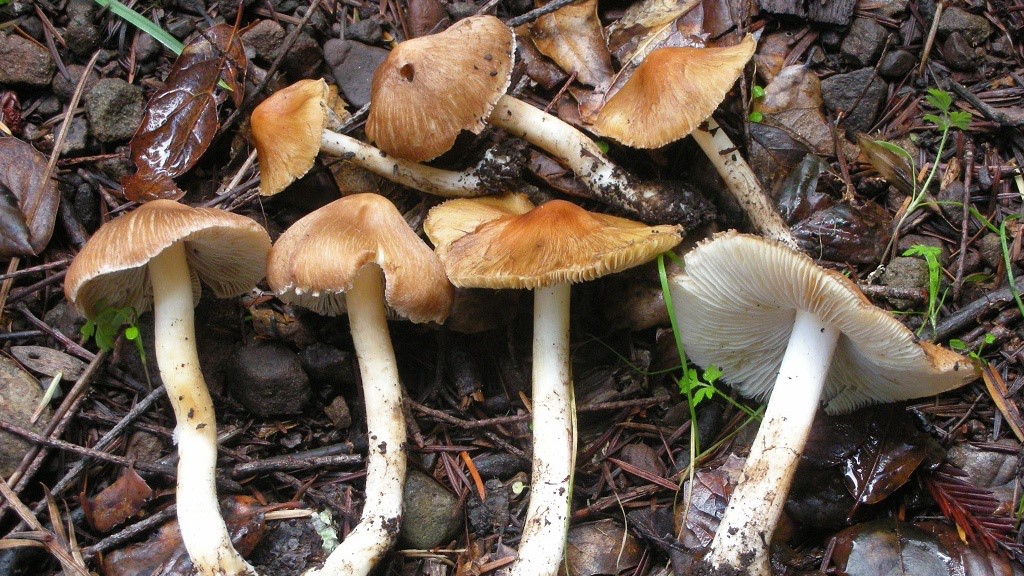


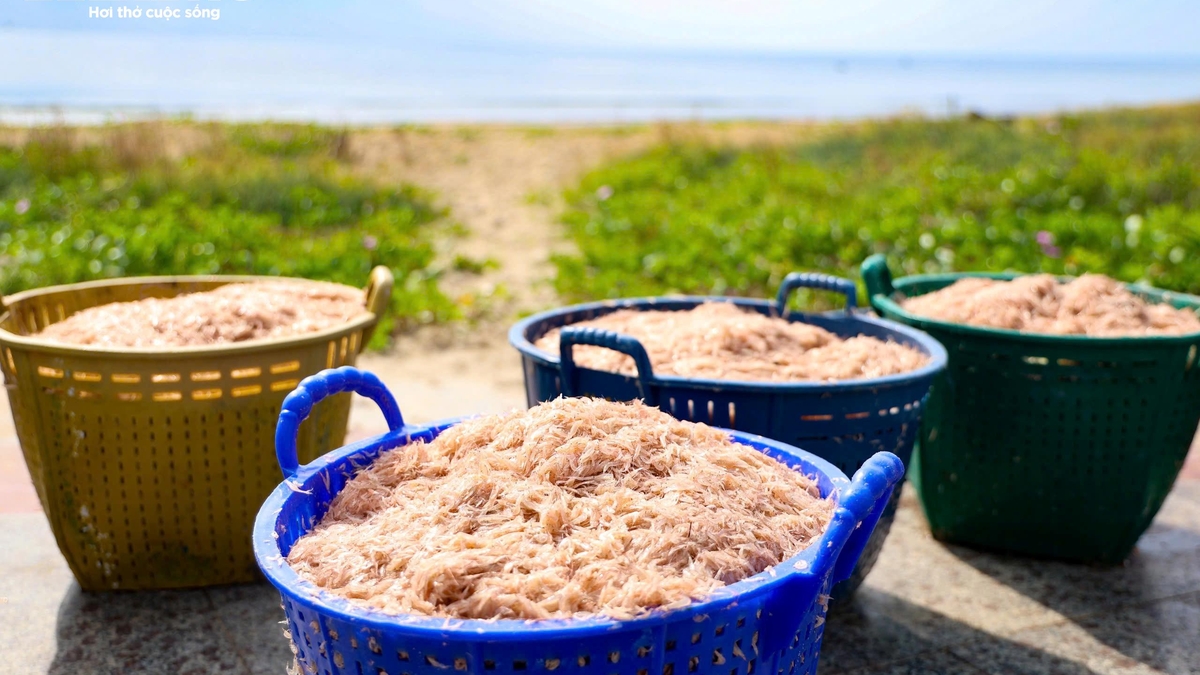
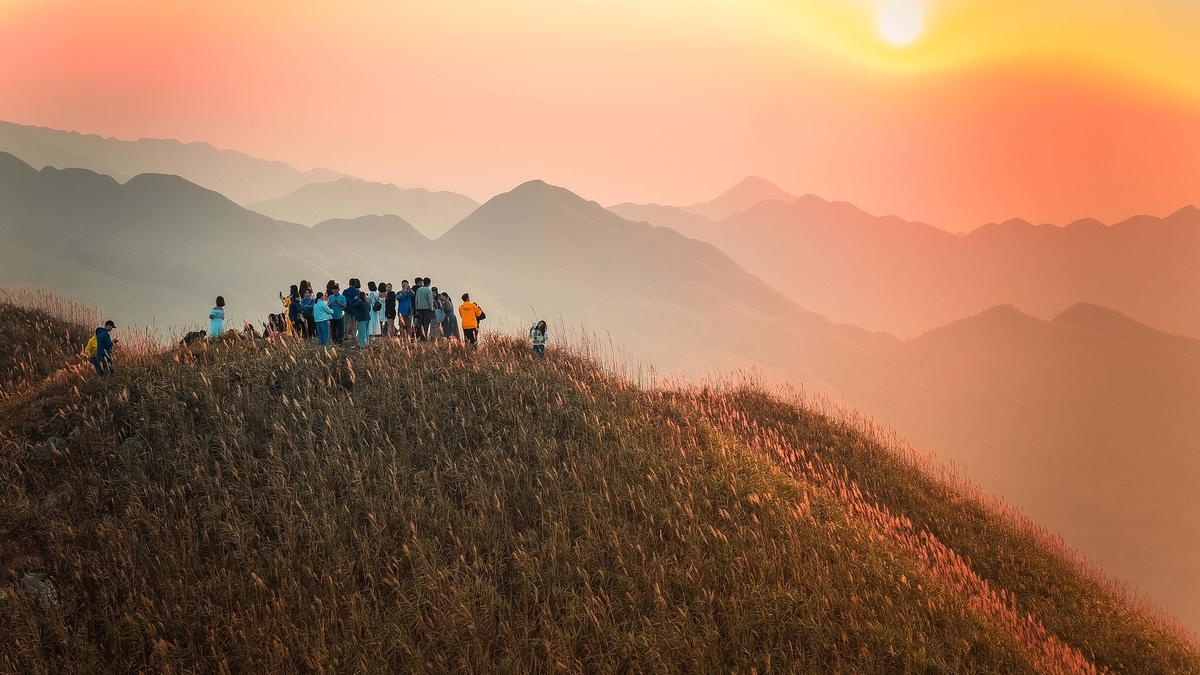











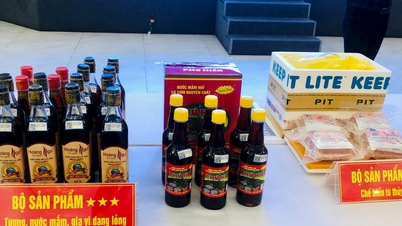
![[Photo] Ready for the 2025 Fall Fair](https://vphoto.vietnam.vn/thumb/1200x675/vietnam/resource/IMAGE/2025/10/14/1760456672454_ndo_br_chi-9796-jpg.webp)

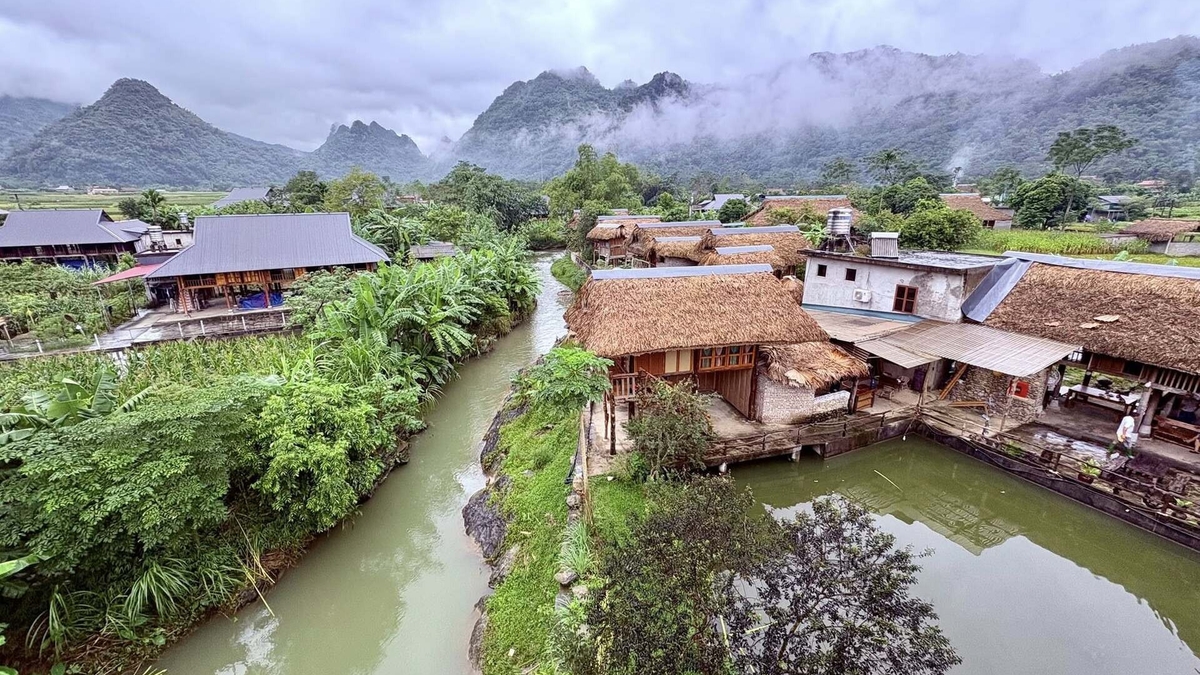

































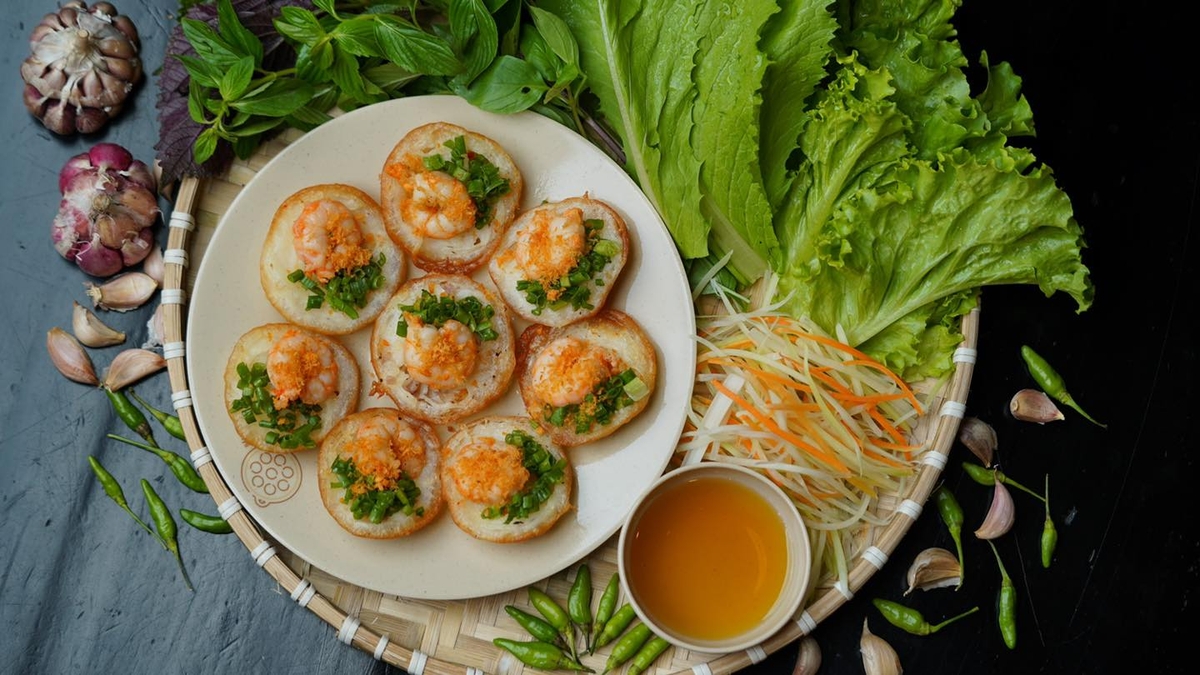


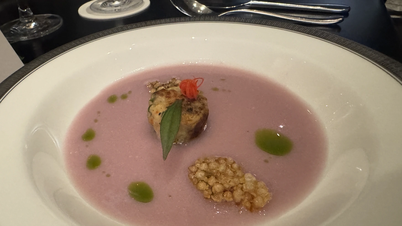







![[Photo] General Secretary To Lam chairs the meeting of the Central Steering Committee on science, technology development, innovation and digital transformation](https://vphoto.vietnam.vn/thumb/402x226/vietnam/resource/IMAGE/2025/10/15/1760500443782_anh-man-hinh-2025-10-15-luc-10-52-47.png)









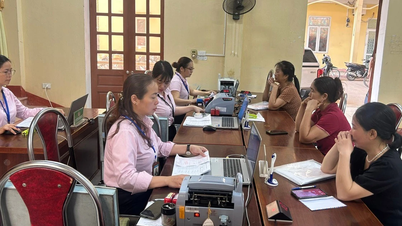

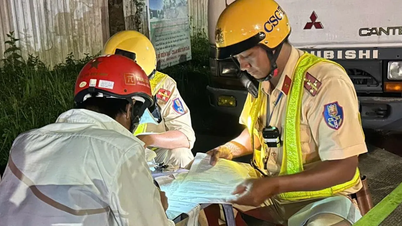







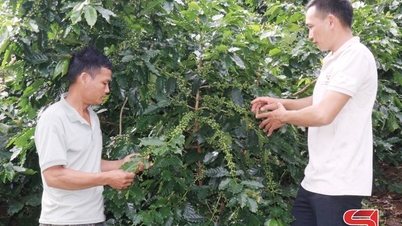

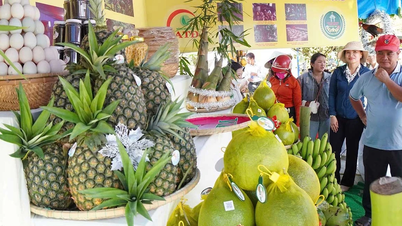



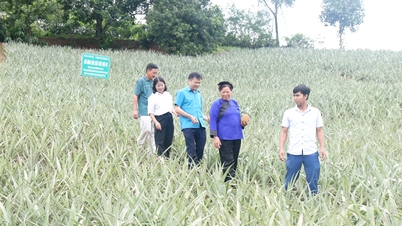





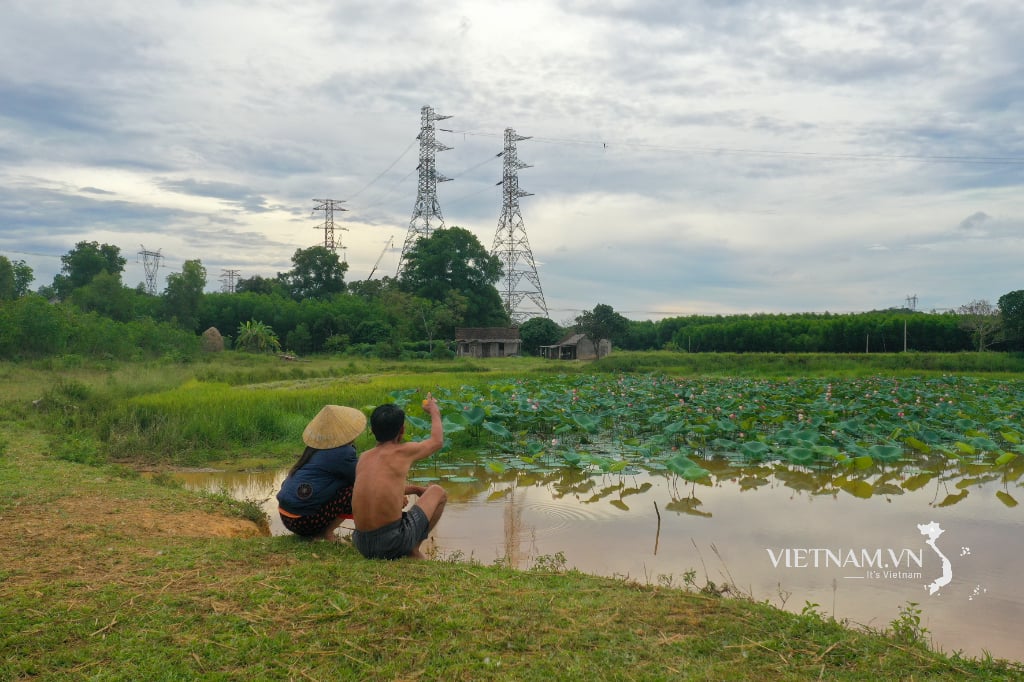


Comment (0)